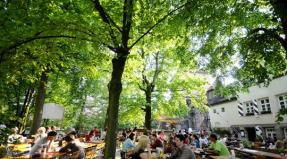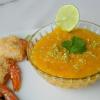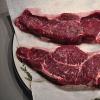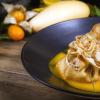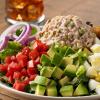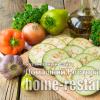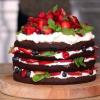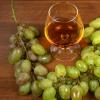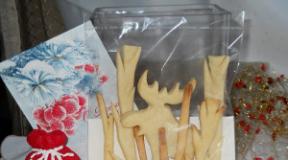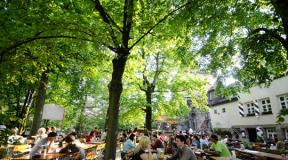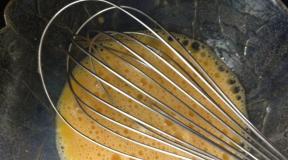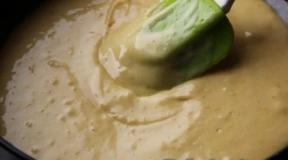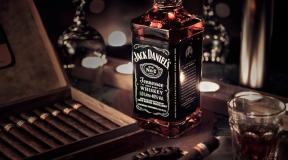Technology for the production of real cognac. Cognac production technology or what real French cognac is made from Equipment for cognac
The production of cognac is a complex, lengthy process that requires special grape varieties, unique equipment and craftsmen who are able to precisely follow all technological nuances. Next, I will talk about the stages that real French cognac goes through before hitting store shelves.
Cognac technology is controlled at the level of French legislation; it is allowed to be produced only in one geographical region of the country - Poitou. All drinks created in other regions and countries are not cognac, they are called grape brandy.
Stages of cognac production
1. Growing grapes. According to classical technology, the following grape varieties are allowed to be used: Folle Blanch, Ugni Blanc and Colombard. But in the vast majority of cases, Ugni Blanc is used; 98% of cognacs are made from this grape variety.
The vines are planted in rows at a distance of three meters from each other. This allows the use of special machines for harvesting, which reduces the share of manual labor and reduces the cost of production. Cognac houses begin cleaning in mid-October.

2. Getting juice. All harvested grapes are immediately sent under special presses, which only slightly crush the berries. At the legislative level, it is prohibited to use continuous screw presses capable of squeezing berries dry.
3. Fermentation. The juice obtained at the previous stage is immediately sent for fermentation. This process takes place in special containers with a volume of 50-200 hectoliters. It is strictly forbidden to add sugar.
The manufacturer has the right to add only antiseptics to the juice - antioxidants and sulfur dioxide. The maximum amount of these substances is also regulated. Control over fermentation is especially strict, since the quality of the finished cognac largely depends on this stage.
As a result of fermentation, unfiltered and unclarified dry wine is obtained (sugar content less than 1 g/l), which is stored on its own yeast sludge before distillation begins. This wine contains a lot of acid and little alcohol (no more than 8-9% by volume).
4. Distillation. The cognac house must complete the distillation process by March 31 of the year following the harvest year. The following requirements are put forward:
- distillation should be carried out only within a certain geographical area;
- You can only use special copper stills, called alambics (in the picture), which must be registered before use.
 Alambik
Alambik Before serving in the alambik, the wine is preheated. Distillation is carried out in two stages. First, the wine is simply distilled to obtain the maximum amount of alcohol possible. A milky liquid containing 27-32% alcohol comes out. In the language of the manufacturers, this substance is called “brouillis”.
The purpose of the second distillation is to obtain pure cognac spirit and fractionate volatile substances. At this stage, the initial output of the distillate (the so-called “head”), which contains many harmful volatile substances, is cut off. Next, the master collects the “body” - a fraction containing 69-72% alcohol, which will be used for the production of cognac.
After the alcohol concentration is reduced to 60%, the distillation is completed, the remaining fraction is called the “tail”. It is not used in the preparation of cognac, but the “tail” can be added to the next batch of brouillet.
It takes approximately 24 hours to distill one batch of cognac. From 10 liters of young wine you can get up to 1 liter of pure cognac alcohol.
5. Exposure. The aging process for cognac spirits lasts at least 30 months, and the oldest spirits can be more than 100 years old. Cognac is placed in oak barrels that do not have metal parts, and the use of glue-based compounds is also prohibited. Therefore, the price of real oak barrels for cognac is very high.
Oak that is at least 150 years old is suitable for barrels. Before using a finished barrel, it must be kept in fresh air for 5 years.
During aging in barrels, substances that form the color and aroma of the drink pass into cognac alcohol from wood. Barrels are allowed to be used multiple times.
For each year of aging, 0.5% of the alcohol evaporates; craftsmen call this “the angels’ share.” In fact, bacteria living on the walls of cellars feed on evaporated alcohol. Over 50 years of aging, the strength of cognac decreases from 71% to 46%, but the alcohol itself becomes darker and has a unique bouquet of aromas.
 Cognac aging cellar
Cognac aging cellar 6. Blending (assemblage). It involves mixing alcohols of different ages to obtain a finished drink that goes on sale. If further aging of cognac is not practical, it is poured into glass bottles braided with vines.
7. Adding other ingredients. Cognac production can do without this stage, but in most cases it is still present. Distilled water is added to cognac to adjust the strength, sugar (maximum 3.5% by volume) to regulate taste, oak shavings and caramel to give the cognac a rich dark color. The drink is bottled, labeled and goes on sale.
The main variety of white grapes from which it is produced is Ugni Blanc -Ugni Blanc(better known as Trebbiano). It is a slow ripening variety with high acidity, high yield and good disease resistance. In addition to Ugni Blanc, other varieties are used, such as Colombard and Montille.
They produce more aromatic and richer-tasting alcohols, but are also more difficult to grow. The grape harvest usually occurs in October. Immediately after harvesting, the extraction of grape juice begins. When squeezing juice, horizontal pneumatic presses are traditionally used, which do not crush berry seeds. The squeezed grape juice is then sent for fermentation.
Fermentation is carried out in traditional concrete tanks or modern metal (stainless steel). It lasts about three weeks, after which the resulting wine with high acidity and an alcohol content of around 9% is sent for distillation. The distillation process takes place in a traditional Charente still, consisting of an extraction kettle heated over an open fire (traditional fire sources are wood and coal, more modern - gas), an onion-shaped kettle cap, and a tube curved in the shape of a “swan neck”, which further transforms into a coil passing through the cooler.
The diagram shows:
- Wine heating container
- Tube for supplying hot wine to the cube
- Alembic
- Furnace-furnace
- Cap (chapiteau)
- "Swan neck" (col de cygne)
- Wine heating coil
- Condensation coil
- Cooling water container
The distillation process consists of two stages:
Stage 1: obtaining a primary distillate called “brouillis” - in Russian this is called raw alcohol, with an alcohol content of 27-32%.
Stage 2: the raw alcohol is fed into the boiler of the still for secondary distillation, called “bonne chauffe”. The result is a base high-quality cognac alcohol with a strength of 68-72%, which is poured into oak barrels for aging.
Cognac barrels, with a volume of 270 to 450 liters, as well as barrels for aging wine, are handmade from oak grown in the forests of Limousin and Tronceux. Centennial trees are usually selected for production. Tronçøil oak is characterized by a coarse-grained, soft-tannin structure, while Limousin oak has a medium-grained, hard and high-tannin structure. During production, barrels are fired from the inside to soften the structure of the wood, thereby increasing its extractive qualities.
There are several levels of firing of barrels, depending on the needs of the manufacturer. After firing, the inner surface of the barrel is covered with a layer of burnt sugar - modified under the influence of the temperature of glucose located in the structure of the tree. After filling, the barrels with future cognac are placed in the cellar for subsequent aging or maturation. Over time, cognac becomes darker in color, softer and rounder; many shades appear in the aroma and taste, including notes of flowers, fruits and spices.
Barrels of alcohol are placed in cellars for aging. The porosity of the wood of the barrels and the humidity of the environment [cellar] determine the processes of cognac maturation and the evaporation of alcohol from the barrels. Aging consists of three main stages: extraction, hydrolysis and oxidation. By extracting coloring substances from wood, cognac alcohol acquires color - from colorless to golden yellow. At this stage, some of the volatile components evaporate and, in addition to color, the taste and aroma of the drink changes. Notes of oak and vanilla emerge. Upon completion of the hydrolysis and oxidation processes, the taste of the drink softens, becomes more rounded, the aroma of oak gradually gives way to floral and fruity notes with light vanilla shades, and the color gradually becomes richer. Over the years, the drink becomes even more velvety, the bouquet of aromas is enriched and acquires notes of aged fortified wine (the so-called “rancio”).
When the Cellar Master decides that the drink is ripe, it is poured from the barrel into a special large glass bottle, the so-called demijan (Dames-Jeanne) and hermetically sealed. Cognac is stored in them for decades without further changing its properties. The special section of the cellar where demidjans are stored is called a “heavenly place.”
The natural evaporation of alcohol from barrels received the poetic name “angels’ share.” In reality, this share of angels is approximately 2% of the total inventory. This means that more than 22 million bottles per year (!) literally evaporate into thin air!
To obtain the required cognac strength, alcohols are diluted with water. This is called reduction. For this, as a rule, distilled or demineralized water is used. Some masters add 1-2% to barrels during regular tastings. Others do this once before the assembly.
By the way, it is interesting that the evaporation of alcohol vapor serves as a breeding ground for microscopic fungi “torula compniacensis”. This fungus covers the walls of the cognac cellar, giving them a characteristic black color. Often it goes outside, covering the walls of the house. Then it is easy to identify the houses where the cognac cellars are located.
In large commercial houses, cellar masters purchase cognac spirits from winemakers immediately after distillation is completed. They strictly monitor and manage the aging process, regularly tasting drinks, moving them to another barrel or to another cellar in order to obtain the parameters they need. In small houses, the cellar master works with his own spirits, or rather, with materials made by himself and his predecessors - his father and grandfather. The preparation of the final product, cognac, completes the aging process of alcohols. To achieve the organoleptic parameters of the drink required by the cellar master, he usually mixes several cognacs (taking them from the dimidzhans stored in the “paradise”). In this case, cognacs of different ages and regions of origin of the grapes are often used. This process is called assemblage.
Assembling cognac is the main job of the cellar master. The assembly rules are very strict, they are mainly intended to protect against counterfeiting. The only exception is the production of millezim cognac, when the cellar master decides (after distillation) that the product has such outstanding characteristics that it will make an outstanding cognac and the assemblage can only ruin it. This cognac is called millesim and the year of harvest (millesim or vintage) is indicated on its label. Producing such cognac is much more expensive, in particular also because the entire process is strictly controlled by representatives of the National Institute (whose work is paid by the manufacturer) and the barrels are sealed with special red wax seals. Therefore, the prices for such cognac differ from usual ones.
The cognac production process is completed by bottling - pouring the drink into bottles or beautiful decanter jugs, glass or crystal.
1.Production of cognac wine materials
Cognac wine materials are produced using the white method from white, pink or red grape varieties that do not have a specific, strongly expressed aroma and intensely colored juice.
According to the current technological instructions, grapes with a mass concentration of sugars of at least 140 g/dm 3 and titratable acids of at least 6 g/dm 3 must be sent to cognac production. However, due to frequent unfavorable climatic conditions, as well as insufficient supply of raw materials, the use of grapes with a mass concentration of Sugars below 140 g/dm 3 is allowed.
The grapes sent for cognac production are processed on production lines equipped with both centrifugal and roller destemming crushers. At the same time, for the production of cognac wine materials, it is recommended to use only gravity and the first press fraction.
After 6-8 hours of settling and clarification in the cold at a temperature of 10-12 ° C or for 12-15 hours without cooling, the grape must is sent for fermentation. Fermentation is carried out without the use of sulfur dioxide in a periodic manner in tanks of various capacities or in a continuous manner in continuous fermentation lines of various modifications.
In finished cognac wine materials, the volume fraction of alcohol must be at least 8%, the mass concentration of titratable acids must be at least 4.5 g/dm 3 , sugars must be no more than 3 g/dm 3 , volatile acids must be no more than 1.2 g/dm 3 3, total sulfurous acid - no more than 15 mg/dm 3, and the permissible volume fraction of yeast - no more than 2%.
2. Distillation process allows not only to isolate alcohol, but also to enrich it with volatile components of the distilled wine material and those formed at high temperatures in the still.
Mainly low-boiling volatile substances of the wine material pass into the head fraction - esters of acetic and butyric acids, esters, higher alcohols, volatile acids. However, this process is complex and depends on many factors that cannot always be taken into account. The behavior of the volatile components of wine material during distillation can be judged by the value of the rectification coefficient, which shows how easily a particular component is distilled in relation to ethyl alcohol.
During fractional distillation of raw alcohol (alcohol content decreases from 30.5% vol. to 0.03% vol.) at the initial moment of distillation associated with the selection of the head distillate, the distillate will be enriched with methyl alcohol, acetaldehyde, ethyl esters of acetic and capric acids . However, isoamyl alcohol and ethyl lactic acid are intermediate impurities. And only later, as the alcohol content of the distilled liquid decreases, do they acquire the character of headaches. Simultaneously with distillation in the still, the formation of aldehydes, alcohols, acids, esters of volatile phenols and other compounds occurs. The oxidation of alcohols, primarily ethyl, leads to the formation of aldehydes - acetic, isobutyl, isoamyl, benzyl, beta-phenylethyl and others. Oxidative deamination and subsequent decarboxylation of amino acids serves as a source of formation of aldehydes, which contain 1 carbon atom less than the original amino acid.
Thus, young cognac alcohol includes a large number of compounds - higher alcohols (over 10 components), esters (over 20), aliphatic aldehydes (more than 10), fatty acids (about 10), terpenoids. Young cognac alcohol also contains compounds of furan and pyran nature, such as 5-methyl-4-hydroxy-3(2H)-furanone, 3-hydroxy-2-pyranone and 3,5-dioxy-6-methyl-4-pyranone , which are formed during distillation.
3. Of decisive importance for the formation of cognac as a drink with its own unique taste and aroma is aging cognac spirit in oak containers.
The physical processes during aging of cognac alcohol are represented by the extraction of oak wood components with alcohol, its absorption by oak staves and evaporation. The amount of absorption is determined by the porosity of the wood, temperature, alcohol strength, and the specific surface area of the barrel. The rate of absorption increases with increasing pressure and decreases as the viscosity of old alcohols increases.
During the process of aging young cognac alcohol in contact with oak wood, various substances are extracted from it, which are then bound under the influence of oxygen into chemical compounds that give cognacs a specific aroma and taste.
The beginning of the oxidation process is characterized by autoxidation of organic compounds of cognac alcohol with the accumulation of peroxides and hydroperoxides. Simultaneously with the emergence of radicals, their recombination occurs. These transformations are defined as chain free radical processes with degenerate branches. At the initial stage, the formation of free radicals occurs, initiating chain reactions. Some hydroperoxide molecules decompose into radicals, while the rest react ionic or molecular. The resulting radicals initiate new oxidation chains, which leads to chain degeneration, because a small part (6-10%) of hydroxide molecules undergo homolysis. Their decay occurs much slower than the speed of the chain reaction.
4. Maturation and aging of cognac spirit accompanied by the extraction of oak components and their chemical transformation under the influence of oxygen, as well as the interaction of these compounds with each other and cognac alcohol.
At the first stage, the extraction of the most easily extracted tannins and their intensive oxidation, hydrolysis of hemicelluloses and the appearance of xylose, arabinose and glucose, and the formation of furfural occur.
At the next stage, the extraction of tannins weakens, but their further oxidation occurs. Under conditions of higher acidity, the extraction and ethanolysis of lignin and the hydrolysis of celluloses occur more intensively, and fructose appears.
Aged cognac alcohol contains 2-hydroxy-3-methyl-2-cyclopenten-1-one, 2,5-dimethyl-4-hydroxy-3(2H)-furanan, 2-hydroxymethyl-5-methyl-4-hydroxy-3 (2H)-furanone, the origin of which is associated with the decomposition of ascorbic acid catalyzed by copper compounds. The dehydration products of ascorbic acid have a pleasant aroma.
If there are a lot of esters in the medium and there is a lack of acids, deesterification may occur, which will lead to a decrease in the ester content even in aged cognac spirit.
Therefore, the quality of cognac alcohol is determined not so much by the total content, but by the presence or absence of specific esters. For example, enanthic ester plays an important role in the formation of the organoleptic characteristics of French cognacs, giving their taste a highly valued soapy tone.
It is believed that the bouquet of cognac mainly depends on the content of octalactones, fatty acid esters and aromatic aldehydes; the aroma, taste and color are determined mainly by tannins and low molecular weight components of lignin.
However, the composition of cognac is not limited to these compounds, but includes a large number of components, among which about 500 esters, acetals, carboxyl and phenolic compounds, aliphatic and aromatic acids, keto acids, alcohols, carbohydrates, sugars, lactones, and nitrogen-containing substances have been identified.
5. Cognac production
The cognac production process includes a number of technological stages, such as: preparation of blending materials, blending of cognac, its processing and bottling. The main blending materials for cognac production include softened water, alcoholized water, aromatic water, sugar syrup and sugar color.
Softened water is prepared from drinking water by distillation, purification with ion exchange resins or filtration through membrane filters to a hardness of 0.36 mg*eq/l. It is allowed to use natural water with a hardness of no more than 1.0 mg*eq./l.
Alcoholized waters are prepared with a volume fraction of alcohol of 20-25% from middle-aged cognac spirits for a given brand of cognac. Cognac alcohol is diluted with softened water and kept for 90 days in barrels or tanks loaded with oak wood at a temperature of 35-40 ° C.
Fragrant waters are obtained by selecting the tail fraction with a volume fraction of alcohol in the distillate of 45-20% and kept in new treated barrels or tanks on staves at a temperature of 35-40 ° C for up to 70 days. Their quantity is determined by trial blending.
Sugar syrup is prepared by dissolving sugar in softened water. Add sugar to boiling water with continuous stirring at the rate of 1 kg of sugar per 0.05 liter of water and cook until the sugar is completely dissolved.
It is recommended to alcoholize the syrup to a volume fraction of alcohol of 40% with four-year-old alcohol for ordinary cognacs and seven-year-old alcohol for vintage cognacs, and then store for at least 1 year in enamel containers or barrels. Citric acid is added to the alcoholized syrup at the rate of 33 g per 100 l.
Sugar color is prepared from granulated sugar by thermal caramelization in special boilers with electric or fire heating.
The finished color should have a dark cherry color, a residual sugar content of no more than 40 g/100 cm3, have intense coloring ability, and should not produce clouding in 40-50% cognac alcohol. It is recommended to alcoholize the color to a volume fraction of alcohol of 25-30% with five-year-old cognac alcohol and store it in enamel containers or barrels for at least 1 year. The consumption of a regular, non-alcoholized color is up to 4 dal per 1000 dal of cognac blend.
Cognac is blended taking into account the composition and organoleptic characteristics of aged alcohols. In this case, first a test blend is prepared: it is tasted, and if the quality indicators correspond and the typicality of the sample, they proceed to the production blend. If necessary, cognacs are clarified by fining them with gelatin, fish glue and egg white. To select adhesive substances and their optimal doses, a test pasting is carried out
Cognac is considered one of the favorite drinks of true connoisseurs of good alcohol. Today there are many brands involved in its production and manufacturing. Among them there are those that have already earned a world name for themselves through a long existence, and there are those that are just entering the market.
But few cognac connoisseurs know where this drink came from and exactly how it is prepared.
There are several legends explaining the origin of this drink.
One of them says that a certain knight killed his wife and her lover. And a demon appeared to him in a dream, who described in detail exactly how the valiant sir would have to pay for the double murder. The knight, waking up in the morning, decided to atone for his sin.
He ran the wine at home through a special apparatus twice, removed the first and last portions, and poured the middle of the distillation (which is called the “soul”) into a wooden barrel and presented it to the monks. But the inhabitants of the sacred monastery remembered the gift only several years later, and when they tried it, they were surprised by the unusual and very tasty alcoholic drink.

In fact, in the 16th century, in the port city of the same name Cognac in one of the provinces of France on the Chantar River, they began to distill cheap wine twice, through special distillates.
- The original raw material had a rather specific taste and aroma; during long-term storage it peroxidized, since it contained too little alcohol.
- After distillation, it could be stored longer and its strength increased.
- In addition, the finished product took up less space and paid less duty for it. And upon arrival at the destination, such burnt wine was diluted again to its original strength.
Several decades later, the inhabitants of France improved their distillation apparatus and began to produce higher quality wine alcohol, which was called cognac.

But the descendants of the ancient Romans still have their own point of view and insist that it was their ancestors who first invented this drink. True, there were no reliable facts confirming this information.
Attention! Only in 1860 strong cognac began to be sold not only in barrels, but also in bottles, as an independent alcoholic drink. Until this time, its manufacturers positioned it as the strongest wine alcohol, which needed to be diluted with ordinary water before use.
How the drink is made at the factory
The production of this alcoholic drink today is carried out in several stages. Each of them has strict production control and special requirements for its implementation.

Only by following them can you get a truly high-quality and tasty alcoholic drink. The production of cognac takes much longer than the production of most other alcoholic products.
Pressing of raw materials, fermentation and distillation
Cognac is prepared only from special grape varieties. The collected berries are pressed on special presses, which only lightly press the berries.
Attention! In many countries of the world, in particular France itself, there is a special law that prohibits the use of ordinary grape presses, which squeeze out all the juice from the berries.
Manufacturers have the right to use the following components as the only additives:
- sulfur dioxide;
- some types of antioxidants.
The maximum permissible volume of these preservatives is always strictly regulated by the recipe.
It is the fermentation stage that is accompanied by the most detailed control. After all, the quality of the finished cognac will depend on the quality of the resulting raw materials.

After fermentation is complete, a very dry wine is formed in the container, with a mass fraction of sugar of less than one gram. It has a light color and a very low strength, which does not exceed 9 degrees. The resulting raw materials are sent to the next stage of processing.
Distillation is the distillation of the raw materials obtained at the first stage through special equipment. This is done twice.
Important! According to current legislation, the final distillation of last year's raw materials must be completed before March 31 of the current year. Distillation of raw materials is carried out only in special copper pipes that have been previously registered.
For the first time, dry wine is distilled to increase its alcohol content. At the same time, the color of the liquid itself changes from yellowish to the color of milk.
The second distillation allows you to obtain pure cognac alcohol and select the main “soul” of cognac, that is, pure alcohol without the first and last portions of distillation, which has a strength of about 70 percent. Distillation is continued until the strength of cognac alcohol reaches sixty degrees.
Reference! The distillation process itself takes about a day. At the same time, from 10 liters of initial wine raw materials, only one liter of cognac alcohol can be obtained.
Aging and blending
However, the final stages of preparation take the most time in the production of this alcoholic drink.

Excerpt last at least two and a half years, the maximum period is one century. To mature, the resulting cognac alcohol is poured into special sealed oak barrels, which are at least one and a half centuries old.
Reference! What barrels is cognac aged in? It is believed that oak is the ideal tree for aging the drink.
It is very important that the barrels are free of any metal parts. They must be created only on the basis of a special adhesive composition.
During aging, cognac is saturated with oak substances, which are responsible for both its color and strength.
- On average, each year of aging steals about half a degree of strength from the drink.
- On average, over half a century of aging, the strength of cognac decreases by almost 255, but the liquid itself becomes much darker and more aromatic.
Blending- This is the final stage of preparation. It consists of mixing several different types of cognac spirit obtained from different grape varieties.

If there is no further aging of this alcoholic drink in the future, it will be bottled in special bottles.
Reference! Before you pour this alcoholic drink into a barrel for aging for the first time, it must be kept in air for at least five years. In the future, this container can be used several times.
In some cases, after blending, special additional ingredients are added to alcoholic products, such as
- sugar,
- specially prepared water,
- flavoring herbs
- spices.
Such ingredients allow you to create certain types of cognac with a specific taste and aroma. After all the components have been added to the alcohol, it is infused again, then filtered and bottled for further sale.
Properly prepared cognac is distinguished by its pure brown color, it has no sediment, and has a refined taste and aroma.
Watch a video about how cognac is prepared:
Cognac refers to strong alcoholic drinks that are obtained by using white wine that has undergone double distillation and aged in oak barrels. It is oak barrels that are a mandatory and necessary condition for the successful maturation of this drink. Cognac production can easily be called an art.
A little history
Today, even the most ardent fans of this alcoholic drink cannot clearly explain what cognac should taste like. So, it can be quite diverse and depends on the area and country. For example, the famous French-made Napoleon brand does not always smell pleasant.
This is due to the presence of some features in cognac spirits, which are due to differences in the raw materials.
Also, the aroma and taste may change during the distillation process and during the first years of aging. During this period, a peculiar extraction of tannins extracted from wood occurs to a greater extent.
We must not forget about the release of lipids, amino acids, oils and volatile acids. At this time, the cognac acquires a golden color and is filled with a woody vanilla aroma.
The longer the aging lasts, the darker the color and softer the cognac will become. Its taste and aroma will have many different shades, including notes of fruits, flowers and spices.
Stage 1: grape harvest
Only a few grape varieties are used to produce cognac: Folle Blanche, Ugni Blanc, Colombard and Saint-Emilion.

The grape vines are planted at mandatory intervals of at least three meters. This is necessary to ensure maximum access to sunlight. The harvest occurs only once a year at the beginning of October. In modern farming conditions, owners use special machines when harvesting grapes. However, some of them still prefer the old-fashioned (manual) method.
Cognac production technology involves pressing the harvested grapes in horizontal flat presses, which only slightly crush the berries and do not squeeze them dry. The juice obtained in this way is immediately sent for fermentation.
Stage 2: Fermentation
The direct production of cognac begins with fermentation, which takes place in small enterprises in special barrels, and in large enterprises in tanks. It is prohibited to add sugar at this stage. The fermentation process is controlled quite strictly, since the quality of the future alcohol depends on it. The juice is fermented over a month.
The result is a dry young wine with 8% alcohol. It is stored on yeast sediment, due to which the acidity is significantly reduced, and the wine acquires a soft and refined taste. However, the technology for producing cognac involves sending it for distillation, since the resulting wine is quite dry and contains a lot of acid and little alcohol.
Stage 3: distillation
The quality of the finished product depends significantly on distillation, which is carried out only the next year after the new harvest until the beginning of April. Distillation takes place in two stages using a special distillation apparatus known as a Charente still. This equipment is made of copper due to its resistance to tartaric acid.
So, as mentioned above, the production of cognac involves the implementation of a distillation process, which takes place in two stages. Upon completion of the first, raw alcohol is obtained, the strength of which is in the range of 27-32%. From nine liters of wine, only a liter of cognac alcohol is obtained, which is a cloudy and nondescript drink.
The second stage of distillation involves sending the raw spirit for another distillation in order to obtain a base high-quality cognac spirit. This process requires special attention and skill; the alcohol is distilled carefully over 12 hours. As a result of this process, a solution of up to 72% strength is obtained, which is sent for aging, which completes the production of cognac.
Stage 4: exposure

This is the most important stage in the cognac production process. It is aging that is the decisive factor in achieving high quality of the drink. This process lasts more than 30 months, its duration can even be up to 50 years.
These containers should not have any metal parts that could come into contact with alcohol. Under the influence of oak barrels, this alcoholic drink acquires a characteristic specific taste.
During this period, the product is saturated with oxygen penetrating through the pores of the wood, which helps improve the taste of cognac. The aging and price of cognac are directly related. So, the longer the aging, the more expensive this drink is.
Making cognac at home
Cognac is a drink that conveys the spirit of France. The fine technology of its manufacture cannot simply be repeated at home. However, it is possible to create a similar drink. At the same time, it was not the factories that produced alcoholic beverages who started producing this drink, but folk craftsmen. Making cognac at home involves using moonshine as a base. Moreover, the result exceeds all expectations in terms of taste characteristics.
 The production of cognac at home from moonshine is carried out in various ways, which have both simple and complex technology.
The production of cognac at home from moonshine is carried out in various ways, which have both simple and complex technology.
It, of course, should not undergo the same aging as at the factory in oak barrels. It is also not based on grape alcohol. However, the result is an alcoholic drink that is very close to real cognac.
You can especially get an excellent result if you put your soul into it when making it. Often, guests during a feast cannot distinguish either the smell or taste of home-made cognac from an alcoholic drink made in production.
Classic recipe for homemade cognac
As mentioned above, this drink is based on good quality moonshine. The taste and smell of the future alcoholic drink depends on it. The following ingredients must be added:
- crystals of potassium permanganate;
- walnut partitions (one handful);
- natural black leaf tea (teaspoon);
- cloves (six buds);
- cumin (tbsp);
- vanilla sugar (tablespoon);
- lemon acid.
Making cognac at home begins with diluting potassium permanganate in clean and clear moonshine in a glass container. Thanks to this simple procedure, a sediment of fusel oils is formed.
Keep this glass container with the future alcoholic drink in a dark place for at least five days without significant temperature changes and drafts.
After the specified period, the resulting drink is poured through a filter into bottles. That's it - homemade cognac is ready.
Sometimes the technological scheme for cognac production is slightly different. Oak bark and bay leaf are poured into the finished moonshine. It is also infused for at least five days.
Quick preparation of cognac
However, there is a faster way to prepare cognac. So, you need to pour a liter of moonshine, which has a strength of 50% or more, into an enamel pan. Place the pan on the fire and add the following ingredients: allspice peas, a small bay leaf, half a teaspoon of black tea, soda on the tip of a knife, two tablespoons of sugar and a little vanillin.

Bring the contents in a closed pan to 77 degrees, then remove it from the heat and leave for a while (five minutes). Pour the drink into a jar, close it and wait until it cools completely. The resulting homemade cognac is filtered, its strength is increased to 40 degrees, and the drink is bottled.
After about five days, the resulting drink can be consumed. To improve the taste of cognac, you can add a third of a teaspoon of good coffee and a couple of crystals of potassium permanganate to reduce fusel oils with other ingredients.
You can make good cognac if you prepare it with grape juice and leave it on oak bark for at least a month. However, there are other recipes using the last component, which will be discussed below.
Cognac on oak bark
Cognac production in Russia quite successfully uses oak bark. To do this, you need to take three tablespoons of sugar, two tablespoons of oak bark and two tablespoons of loose-leaf black tea for three liters of moonshine. You can also add St. John's wort and chopped rose hips.
You must not forget to add black pepper (5-6 peas), a third of a teaspoon of cinnamon and vanilla. The jar is closed and placed in a dark place. In this way, homemade cognac is infused for three days. Next, the resulting drink is well filtered and bottled.
Cognac made with milk
To do this, you also take moonshine (3 liters), pour it into a slightly larger glass container, add a glass of milk, which curdles when combined with the alcohol composition. At the same time, coffee is prepared (50 g dissolved in lukewarm water).
The coffee drink is poured into the general mixture. The following mixtures are added: ground nutmeg, cloves (4-6 pieces), peppercorns, vanillin on the tip of a knife and half a glass of sugar. Mix the resulting mixture thoroughly and leave for at least 20 days. In this case, it is necessary to shake the future homemade cognac periodically during the first five days. At the end of three weeks, the resulting alcoholic drink is filtered and bottled.


